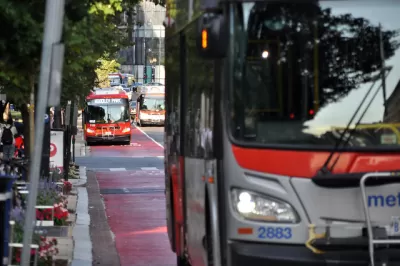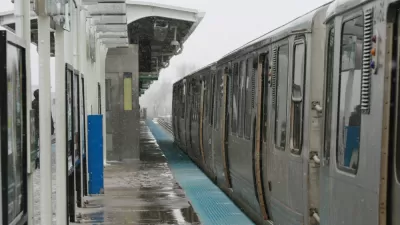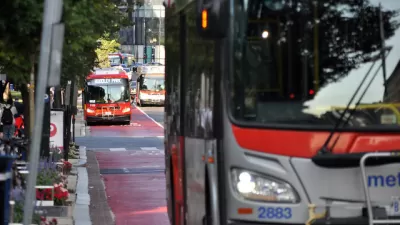Transit service in the District has not yet recovered to pre-pandemic levels, with Black and low-income riders feeling the brunt of the impact.

A blog post from TransitCenter, using data from their Transit Equity Dashboard, assesses the state of Washington, D.C.’s post-Covid transit recovery, which, according to the post, “has been slow and bumpy.”
Unlike other cities that have restored service to pre-pandemic levels, the blog notes that “In August 2022, Washingtonians could access only 91% of the jobs that were accessible by transit in February 2020. In fact, since March 2020, DC residents have never had a level of transit access equal to before the pandemic.”
When it comes to equity, the picture is equally bleak. “White and Asian communities consistently have much better transit service than Black, Hispanic, and low-income communities across every tracked metric. This is despite the fact that Black and Hispanic people are more likely to commute by transit – 17% of Black and Hispanic residents of the District commuted on public transit in 2021, compared to only 7% of White and Asian residents.” Black District residents are able to access 55 percent as many jobs as white residents, 5 percent lower than before the pandemic disrupted transit services. Black residents also have longer trips to reach their nearest hospital.
The blog notes that D.C. transit services are slowly improving, but vast racial and economic disparities remain. See the blog post, linked below, for more details on the District’s transit recovery.
FULL STORY: Checking in on Washington DC’s Transit Recovery

Study: Maui’s Plan to Convert Vacation Rentals to Long-Term Housing Could Cause Nearly $1 Billion Economic Loss
The plan would reduce visitor accommodation by 25,% resulting in 1,900 jobs lost.

North Texas Transit Leaders Tout Benefits of TOD for Growing Region
At a summit focused on transit-oriented development, policymakers discussed how North Texas’ expanded light rail system can serve as a tool for economic growth.

Using Old Oil and Gas Wells for Green Energy Storage
Penn State researchers have found that repurposing abandoned oil and gas wells for geothermal-assisted compressed-air energy storage can boost efficiency, reduce environmental risks, and support clean energy and job transitions.

Private Donations Propel Early Restoration of Palisades Playground
Los Angeles has secured over $1.3 million in private funding to restore the Pacific Palisades playground months ahead of schedule, creating a modern, accessible space that supports community healing after recent wildfires.

From Blight to Benefit: Early Results From California’s Equitable Cleanup Program
The Equitable Community Revitalization Grant (ECRG) program is reshaping brownfield redevelopment by prioritizing projects in low-income and environmental justice communities, emphasizing equity, transparency, and community benefits.

Planting Relief: Tackling Las Vegas Heat One Tree at a Time
Nevada Plants, a Las Vegas-based nonprofit, is combating the city’s extreme urban heat by giving away trees to residents in underserved neighborhoods, promoting shade, sustainability, and community health.
Urban Design for Planners 1: Software Tools
This six-course series explores essential urban design concepts using open source software and equips planners with the tools they need to participate fully in the urban design process.
Planning for Universal Design
Learn the tools for implementing Universal Design in planning regulations.
Ascent Environmental
Borough of Carlisle
Institute for Housing and Urban Development Studies (IHS)
City of Grandview
Harvard GSD Executive Education
Toledo-Lucas County Plan Commissions
Salt Lake City
NYU Wagner Graduate School of Public Service





























